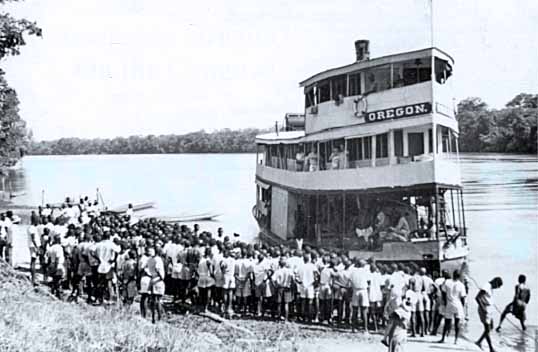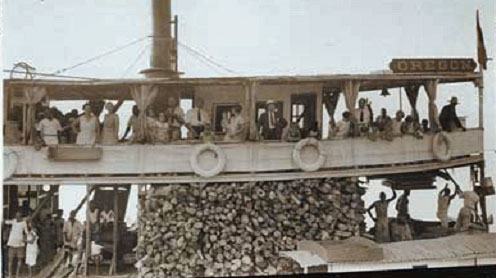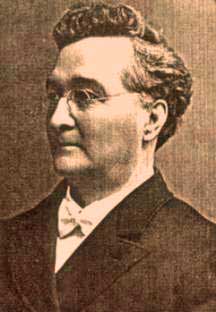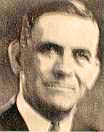Main Pioneer Menu | Profiles Index | Search Engine
Pioneer Northwest Gospel Preacher
By Charles Dailey - March 2002
| Davis Errett at a Glance: | |
| Father: | Joseph James Errett, older brother of Isaac Errett, 1st editor of the Christian Standard. |
| Born: | 1853 in Palmyra MO |
| Raised: | Paynesville MO |
| Education: | University of Kentucky and Transylvania University, both in Lexington KY |
| Married: | Ursula E. Wiles at Plattsmouth NE in 1889. |
| Children: | None |
| Ministries before the Northwest: | Walnut Hill, Omaha NE Kirksville MO Palmyra MO Canton MO Waco TX |
| NW Ministries: |
Salem OR 1903 - 1913 Boise ID Coeur d'Alene, ID Athena OR 1916 - 1918 University Church, Spokane WA Greenacres WA Spokane University Christian College, Pierre, SD |
| Died: | 1930 |
| Buried: | Compton, CA |
When the name of Errett appears, readers with a background in the Restoration Movement immediately think of Isaac Errett and ask "Was he related?" The answer is yes, he was a nephew of the famous editor of the Christian Standard. One historian characterizes Isaac Errett as a lieutenant of Alexander Campbell.
Another famous uncle of Davis Errett was Russell Errett, a three-term Congressman. Several of his five uncles including John W. were gospel preachers. His grandfather Henry Errett had been an elder in the church in New York City. This actually pre-dates the movment of the Campbells.
Davis Errett
Photo courtesy of
John R. Errett Holloway.The son of a gospel preacher, Mr. Errett grew up in Missouri, then attended the University of Kentucky and Transylvania University. He studied law and worked initially as a journalist. He accepted a call to preach in Omaha, Nebraska and then continued in the work of gospel preaching the rest of his days.
After preaching in several locations in the mid-west, Davis Errett preached at what is now First Christian Church in Salem, Oregon beginning in 1903. Mr. Errett will long be remembered in Oregon church history for his part in making the mission steamboat Oregon a reality.
But first, some background. Davis Errett's uncle, Isaac Errett, had established a Church of Christ in Ionia, Michigan in 1859. Later, one of the believers there, Dr. Royal J. Dye, married Miss Eva Nichols and they went to the then Belgian Congo as missionaries.
Now, back to Dr. Swander and the steamboat.
Historian Clarence Swander was present and wrote of the event.
At the state convention in 1908, at Turner, Dr. Royal J. Dye and his wife, from Africa, were present. On the last Sunday morning Dr. Dye addressed a vast audience on his favorite theme -- Africa. In vivid language he pictured some of the hardships of the missionary, and particularly he dwelt upon the difficulties of travel from one place to another. There were no roads through the jungles except trails, and these were beset with swamps and wild beasts.
Dr. Royal Dye
The only open highway through the whole country was the great Congo River. Handmade canoes, manned by native rowers, were the only means of navigation. The river was infested with alligators, and the current was swift. If they escaped one danger they would run into another, so that in a very real sense they were always between Scylla and Charybdis. He said that a steamboat, sufficient for the use of the mission, would solve many problems both in the matter of safety and efficiency. One could be built for $15,000 but the Society did not have the money.
The Oregon was indeed built in Pittsburg and completed in 1909. Davis Errett was on hand:The address made a profound impression. During the noon hour folks were telling each other how sorry they were for the poor missionary and how they wished they had that boat. It remained for a young student for the ministry, James Blood, to say how much he was sorry. Though only a student he had a note for $150 due him and he would gladly give that toward the building of a boat. James Blood never became a preacher from the platform, but that simple word of his that day has preached the gospel to more heathen, and brought more souls to a knowledge of Christ, than he could have done had he spent his life time as a preacher.
Brother Blood's statement was repeated to the author by Harry Trumbull Sutton, acting head of the School of Oratory at Eugene Bible University. After discussing the possibility of raising $15,000 for such a purpose we went to Dr. Dye and talked it over with him. We then called upon Davis Errett, president of the State Board that year, and in counsel with him decided that the matter should be laid before the audience that afternoon. It was stipulated with Dr. Dye that the boat should be named the "Oregon" if the Oregon churches decided to undertake the task of raising the money.
That afternoon Mrs. Dye gave an uplifting address, at the close of which 32 young people volunteered for Christian service. The congregation then partook of the Lord's Supper with quickened hearts and moist eyes. After that service Davis Errett spoke with persuasive voice concerning the need that Dr. Dye had voiced at the morning hour, he told of the offer made by Brother Blood, and the decision of a few to put it before the convention. The responsive "Aye!" was unanimous.
In a few minutes $2,132 was pledged as an earnest of the action. George C. Ritchey, pastor of the church at Newberg, was appointed by the convention to present the matter to the churches and ask for funds with which to build the boat.
Through the coming year Brother Ritchey pressed the matter with vigor. The churches took hold eagerly. It was a big task for Oregon in those days to raise $15,000 for any purpose. About $10,000 was actually raised in Oregon. The effort was a challenge to others. Offers of assistance came in from other states and the full amount was pledged.
Six thousand delegates to the Convention assembled in the shipyards of the Rees Company as the sun was setting, to dedicate this beautiful mission ship. Those who took the most active part in the service were these: F. M. Rains, the leader; R. Ray Eldred, A. F. Hensey, R. S. Wilson, Mrs. Dye, all of Africa; Davis Errett, George C. Ritchey, all of Oregon; H. T. Sutton, of Illinois; T. H. Rees, of Pennsylvania, and W. H. Allen, of Indiana. R. A. Long sent the Kansas City brass band to assist. About $5,000 was raised to defray the expense of the transportation of the "Oregon" from Pittsburg to the Congo.
-- The Centennial Convention Report (1910).

The final assembly of the ship took place in Africa. The Oregon remained in service until 1950. Did Davis Errett have an impact on the mission field in Africa? Hear from one on the field:It is impossible to overestimate the importance of this steamship in the development of the mission. It first arrived at Bolenge on November 5, 1910. The name was chosen because the churches of the state of Oregon had provided most of the funds for its construction. Its regular trips on the Congo, the Ruki, and tributaries made it possible to reach the interior of the Equator region when travel overland was extremely difficult. The boat and her crew were a true Christian witness . . ."One source says that the number of Disciples near Bolenge is the largest in the world with over one million members. (October 2000)

In sparking interest in the Oregon, Davis Errett made a contribution to the Lord's work that has outlived the rest of his successful ministries.
At the time of his death in 1930, a staff writer at the Christian Standard said:
He was a devoted adherent to the cause of New Testament Christianity, an able teacher of the Scriptures, a humble follower of the Master, an encourager of preachers, and, above all, a genial and beloved friend and brother. He will be missed by a large circle of friends. Christian sympathy goes from thousands of souls to those who are nearest, especially to her who has been his companion over this long pathway and is now especially lonely, but not as those who have no hope.The funeral was conducted by Andrew Mackenzie Meldrum in the Los Angles area where Davis Errett had spent his last days with his wife and physican brother.
Ursula Errett returned to Grant, Nebraska, living until 1951. Her funeral service was in Grant but, according to the memorial folder, she was buried in Angeles Abbey, in Compton California -- beside her husband.
Main Pioneer Menu | Profiles Index | Search Engine

